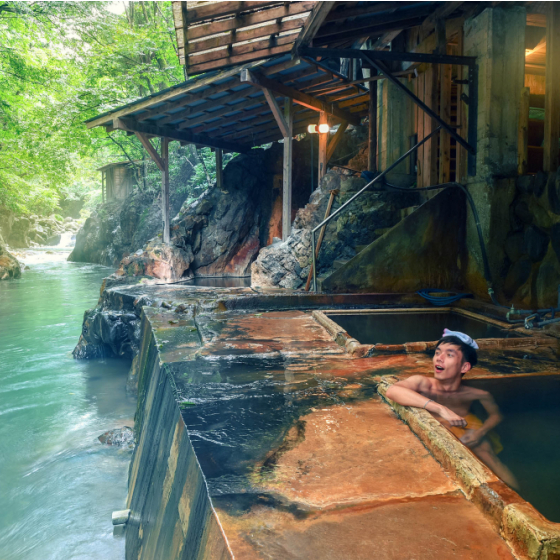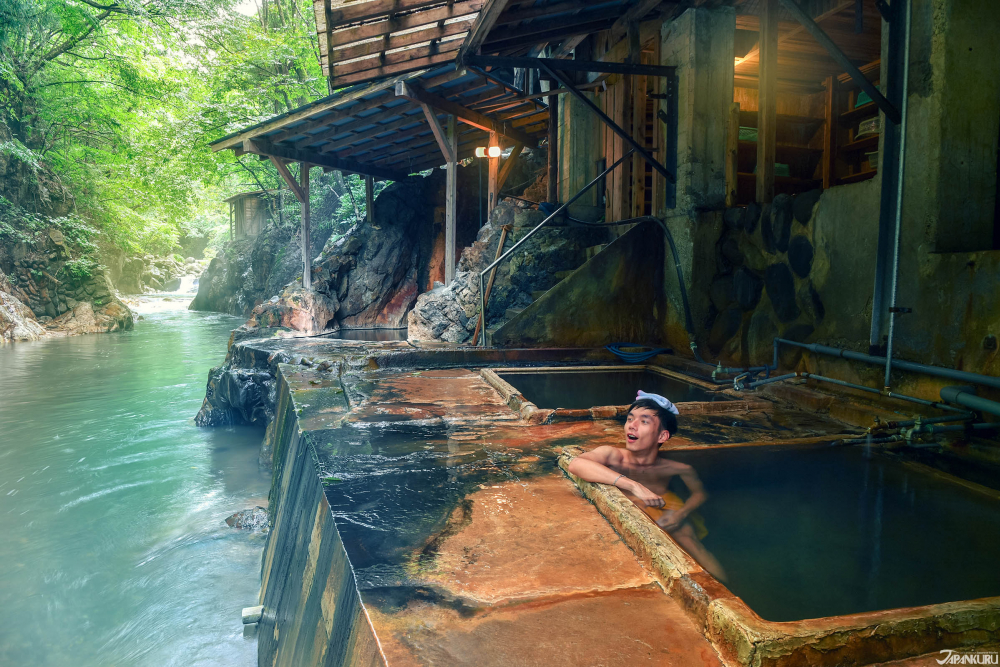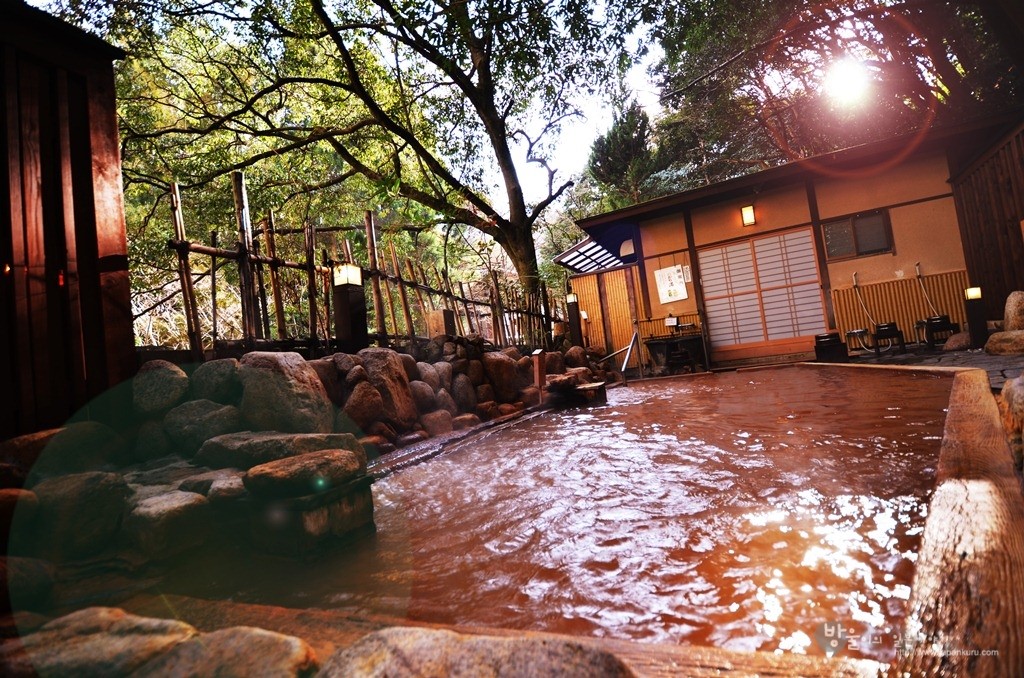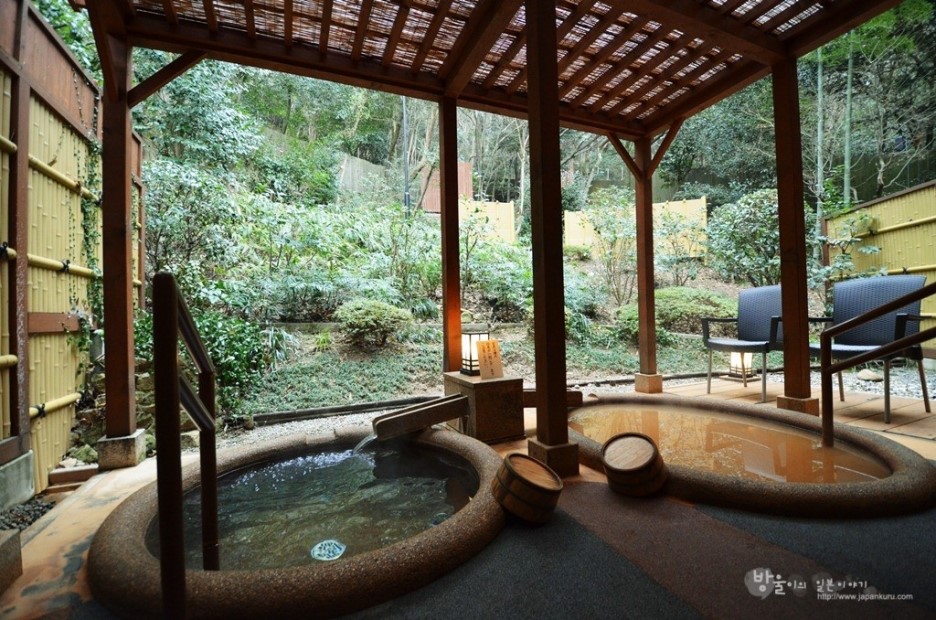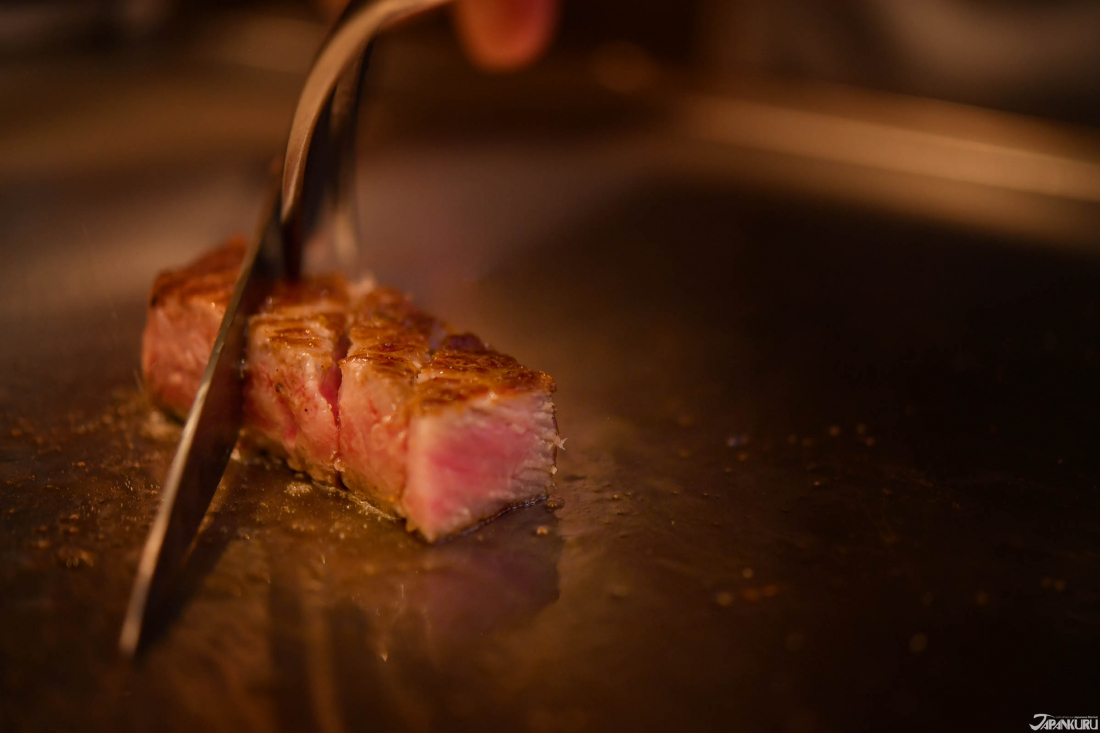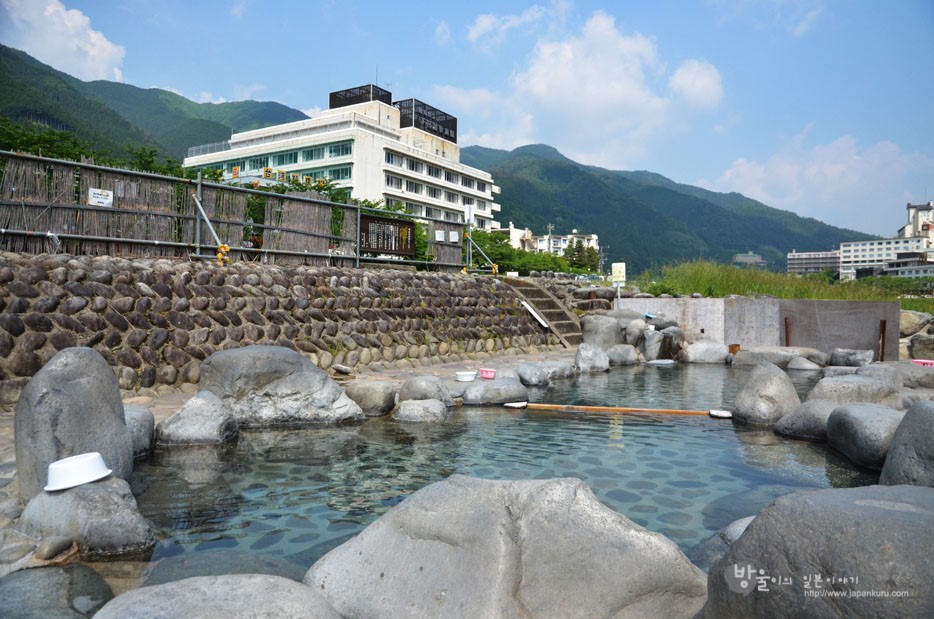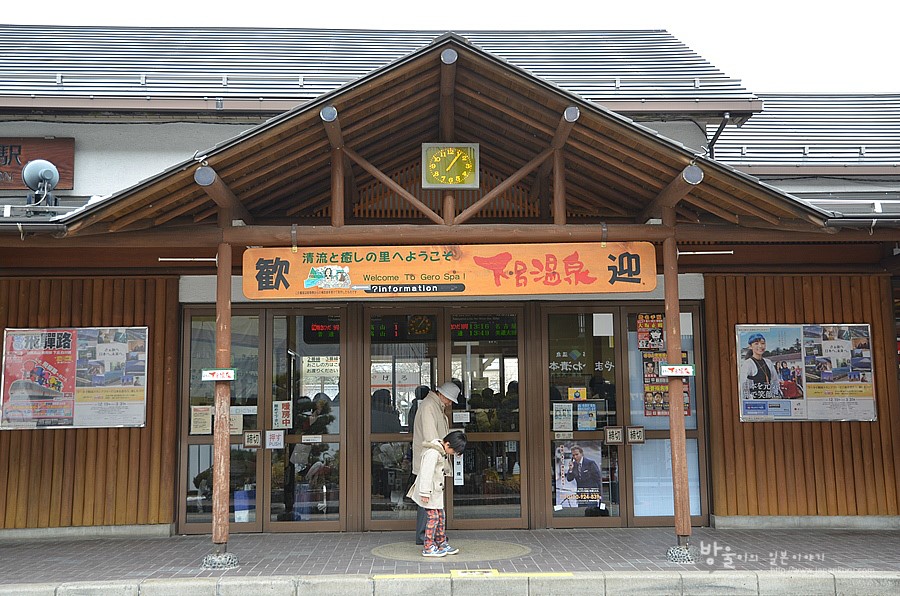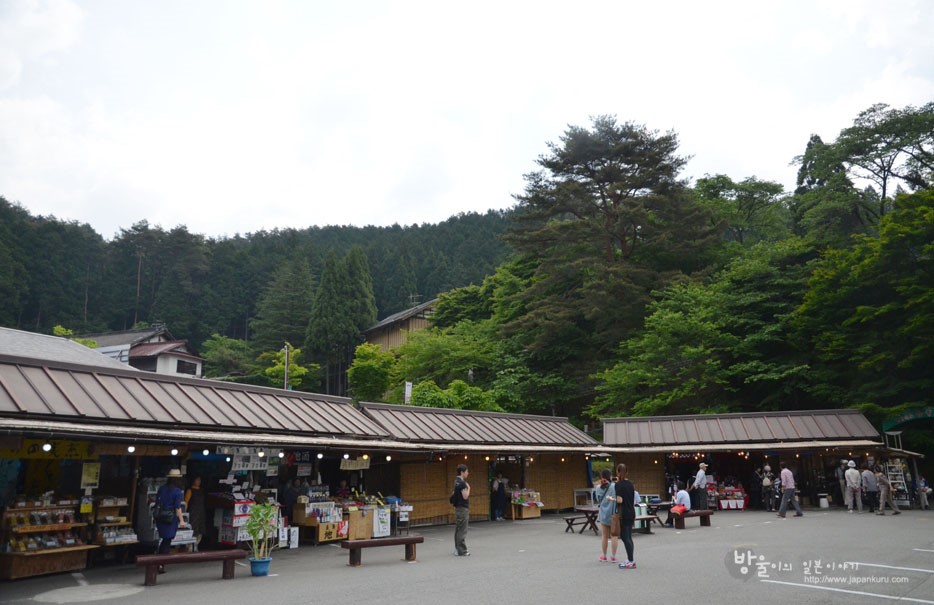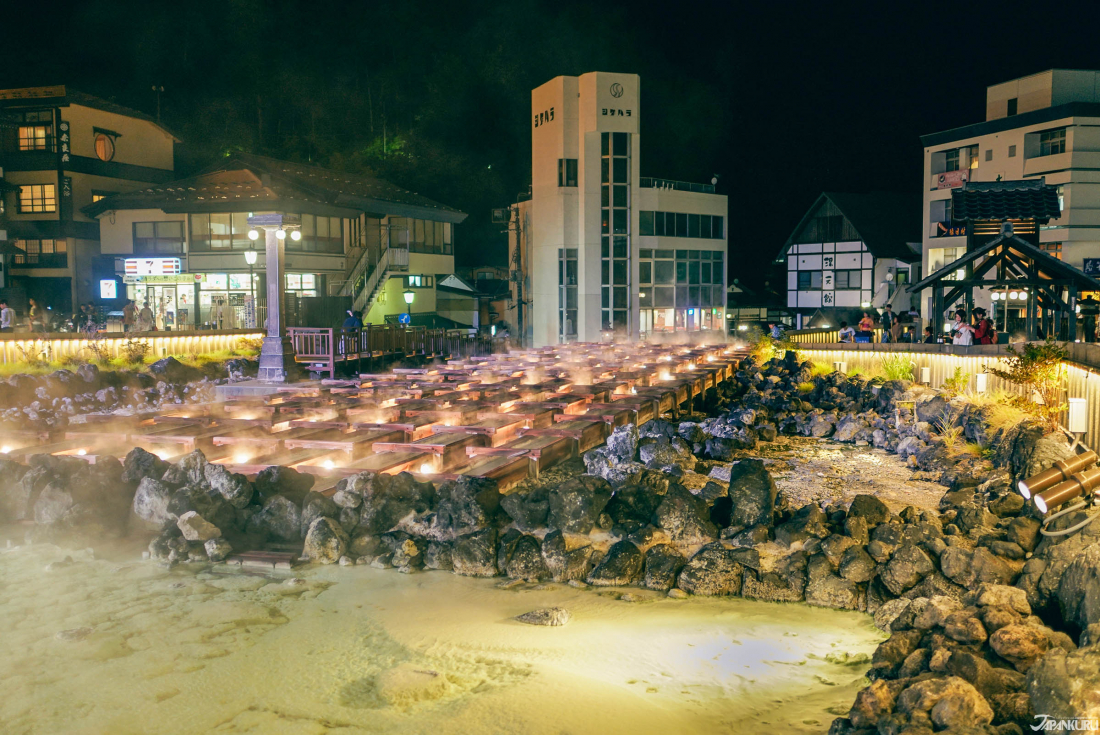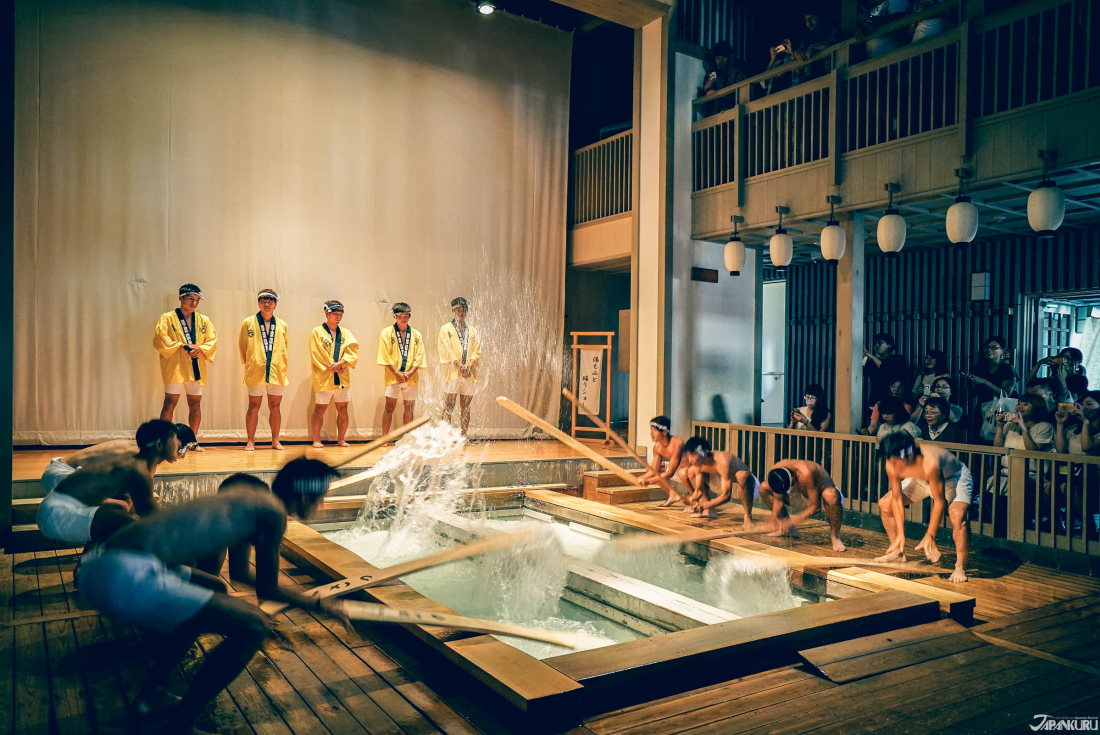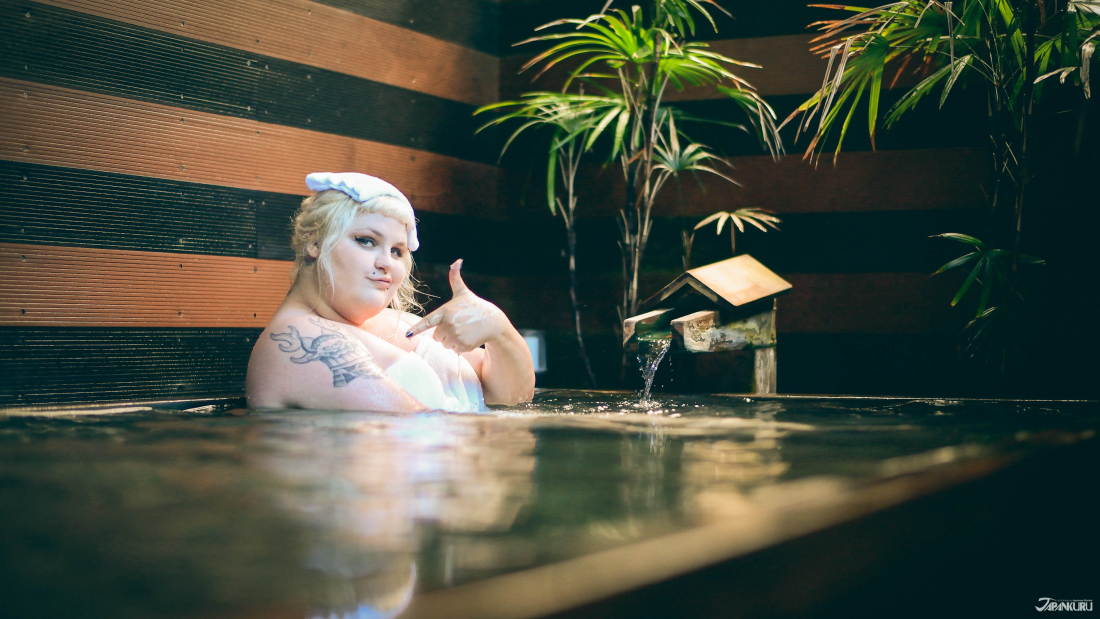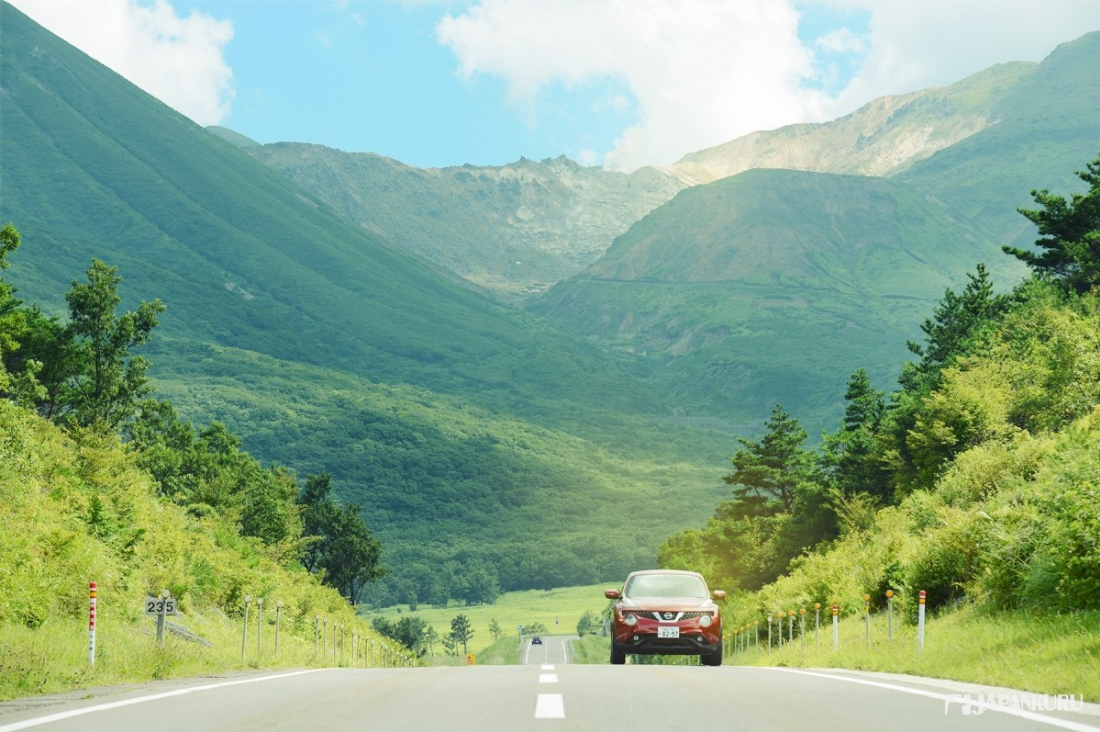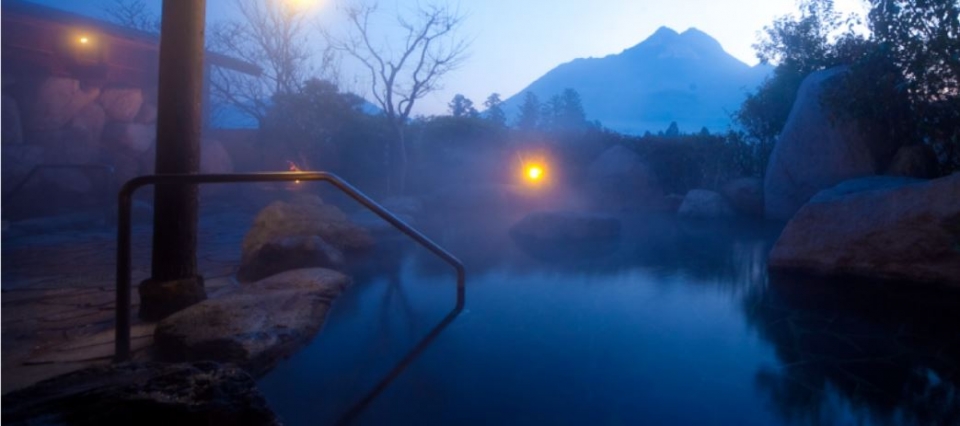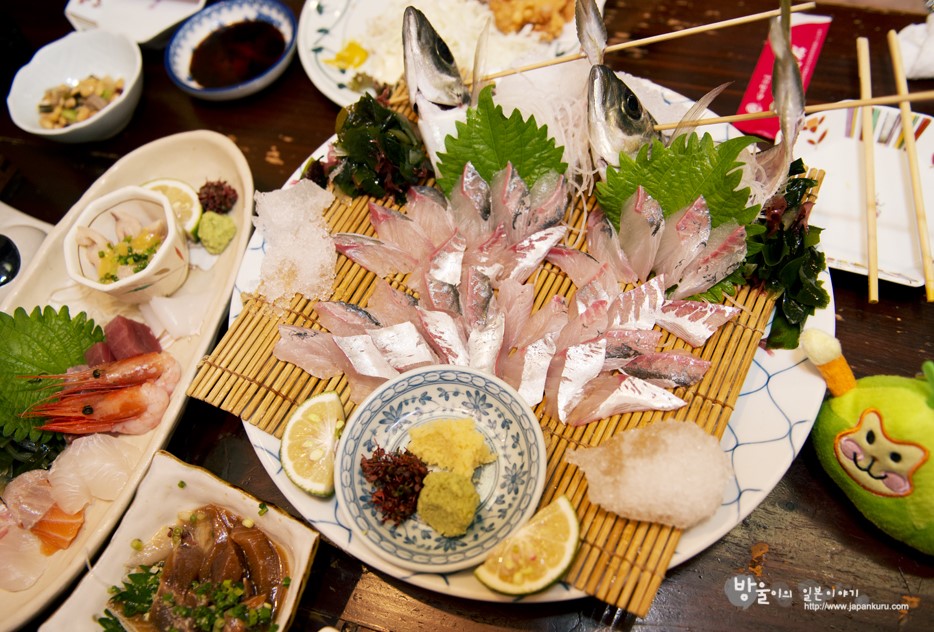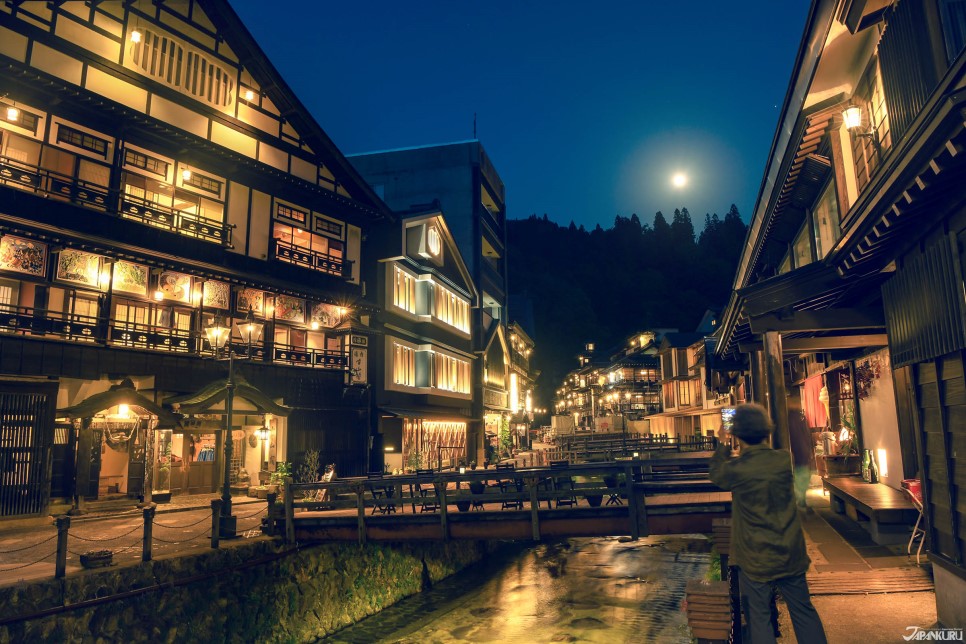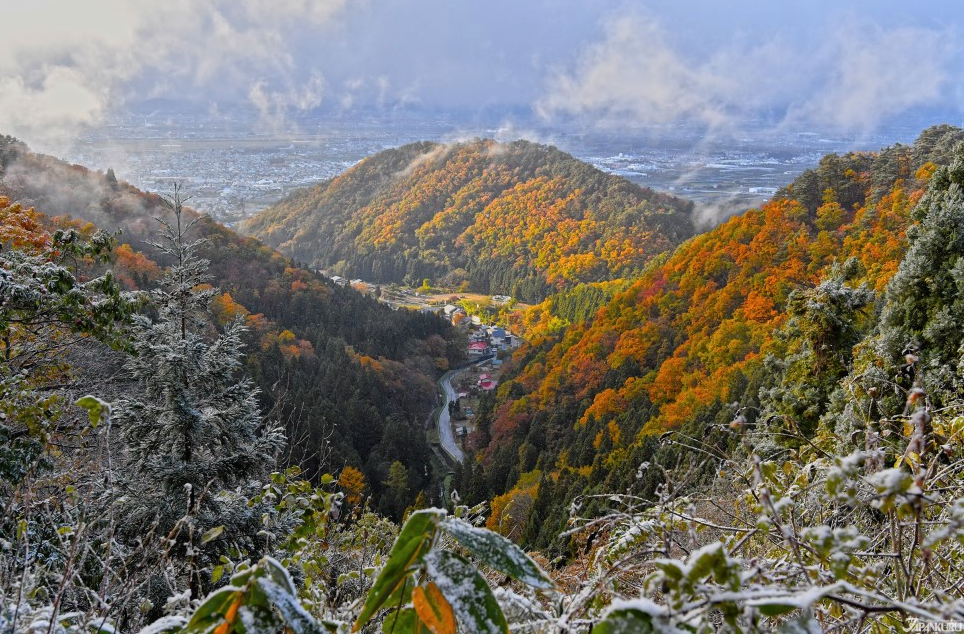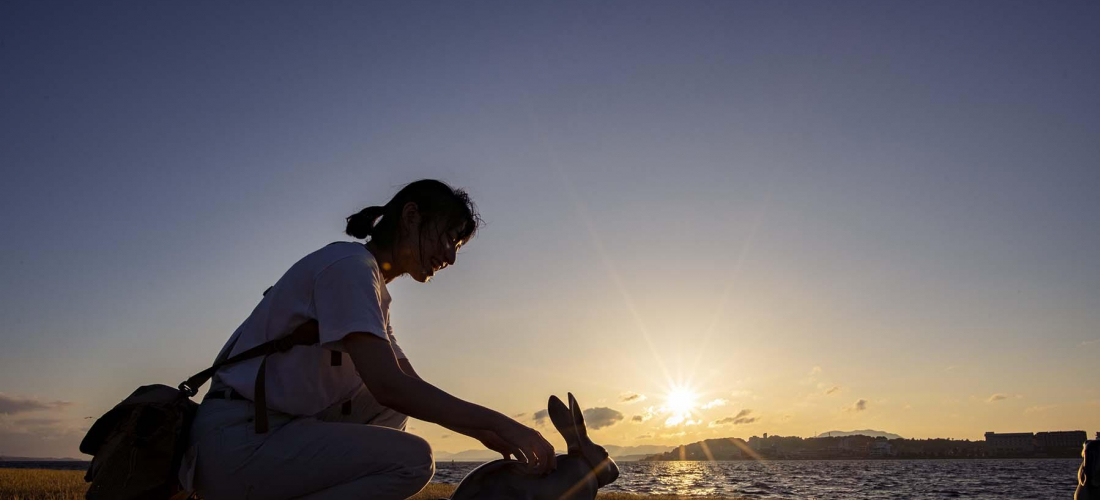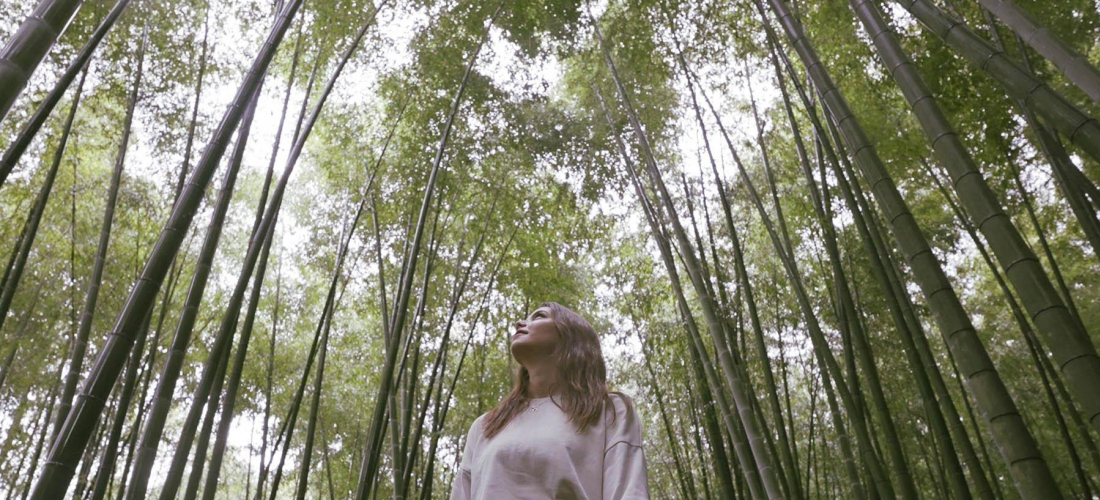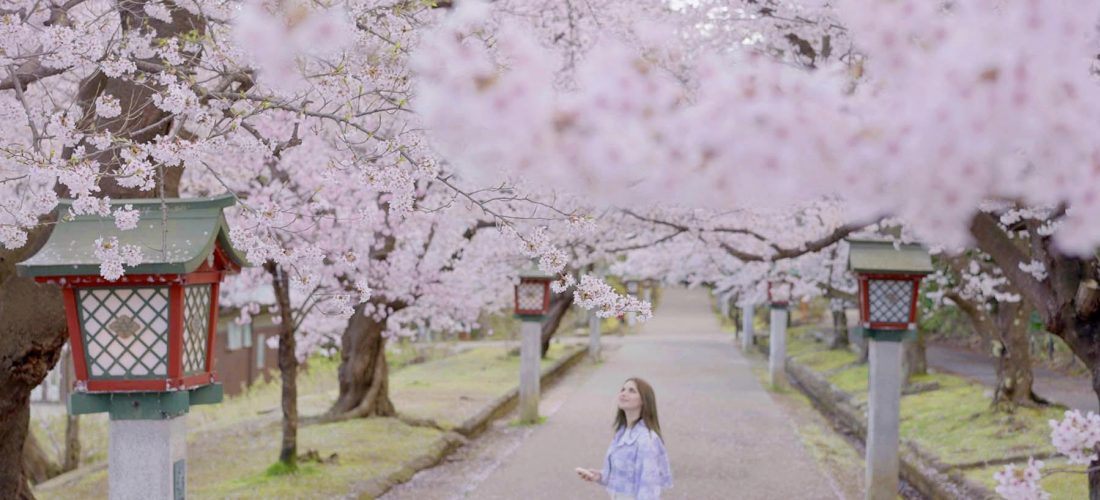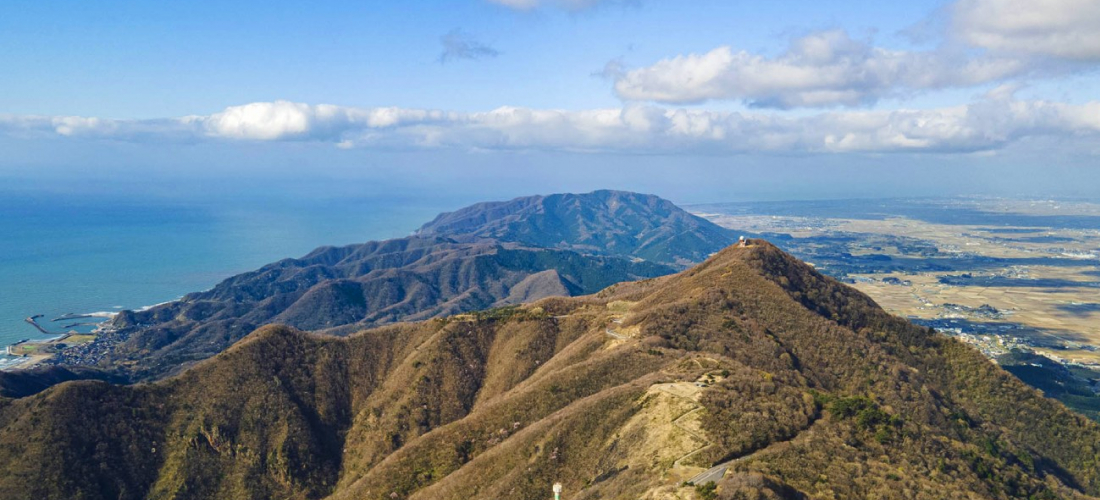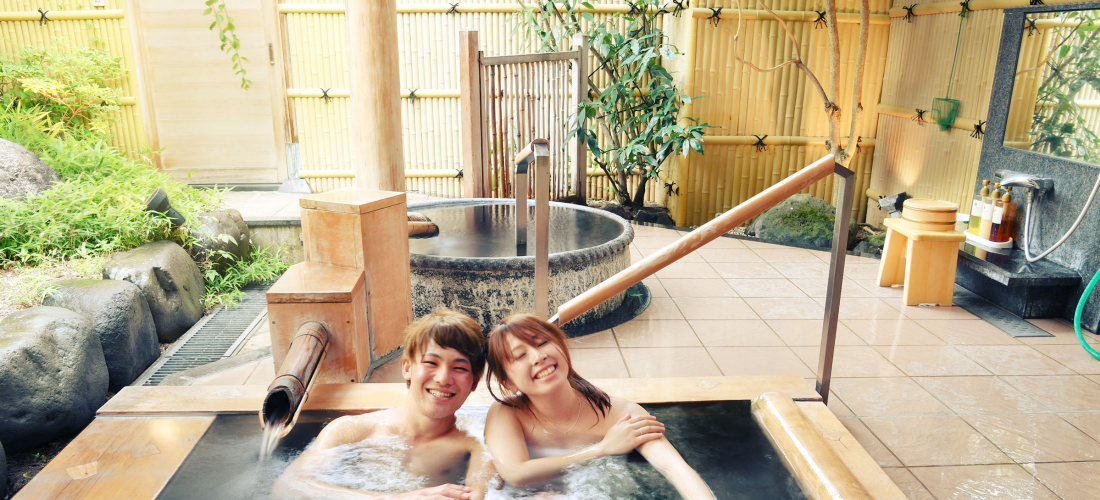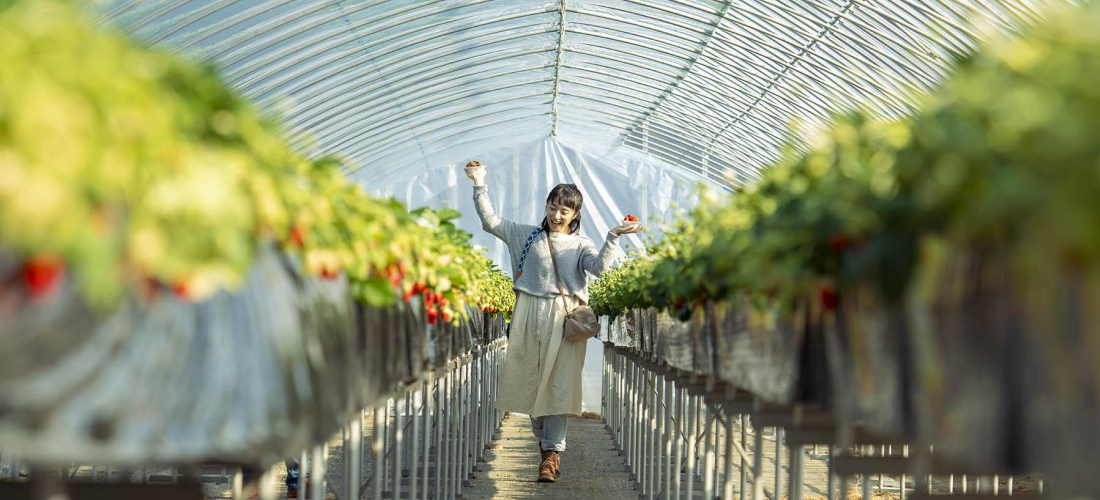CONTENTS
L’hiver au Japon semble froid, avez-vous décidé quelles sources chaudes japonaises visiter?
Restez au chaud durant l’hiver japonais
Au Japon, les sources chaudes (ou onsen, 温泉) font partie intégrante de la culture locale. Grâce à "la ceinture de feu" du Pacifique très active, le Japon abrite de nombreux volcans actifs, et encore plus de sources chaudes naturelles, qui fournissent de l'eau chaude pour les amateurs d'onsen à travers le pays. Chacun de ces bains naturels est unique, certains ayant des propriétés curatives supposées et d'autres apparaissant de couleurs vives, et bien sûr, certains sont plus populaires que d'autres. Alors continuez à lire pour découvrir cinq régions du Japon, célèbres pour leurs sources chaudes!
1. Hyogo Prefecture – Arima Onsen & boeuf de Kobe
Les sources chaudes d'Arima (有 馬) ont longtemps été au sommet du classement national de la popularité des onsen du Japon, et pour une bonne raison, c'est l'une des trois principales «zones onsen» du Japon.
L'un des aspects les plus remarquables d'Arima Onsen sont les sources chaudes de Kinsen (金泉), littéralement «cascades dorées». Cette variété locale d'onsen est connue pour la couleur rougeâtre de l'eau, résultat naturel de la forte teneur en fer des sources chaudes. Le pourcentage inhabituellement élevé de sels de sodium dans l'eau joue également un rôle de stérilisateur naturel, et en outre, les sources chaudes de Kinsen aideraient à soulager l'inconfort des personnes souffrant d'arthrite, de dermatite atopique et autres maladies chroniques.
Si Arima a des sources dorées, il n'est vraiment pas surprenant que l'autre variété de sources chaudes de la région soit … d'argent! Appelées sources chaudes de Ginsen (銀泉), ce sont les «cascades d'argent» de la région. Les onsen Ginsen contiennent plus de dioxyde de carbone, ce qui, selon eux, contribue à augmenter le flux sanguin.
Bien qu'Arima Onsen soit bien connu au Japon, les gens de l'extérieur du pays pourraient être plus susceptibles de reconnaître l'une des principales exportations alimentaires de la région: le bœuf de Kobe. Incroyablement succulente et indéniablement de haute qualité, ne manquez pas cette délicatesse locale pendant que vous êtes à Kobe! (Bien qu'il y ait aussi beaucoup d'endroits autour de Tokyo pour essayer certains des meilleurs bœufs du Japon.)
2. Gifu – Gero Onsen & le marché matinal de Ideyu
Gero Onsen (下 呂 温泉) est une autre des sources chaudes les plus célèbres du Japon, située dans la préfecture centrale du Japon de Gifu. L'eau de ces sources chaudes a tendance à être plus alcaline, ce qui laisse votre peau douce et soyeuse après un plongeon dans le bain. La région dispose également d'un certain nombre de bains publics en plein air gratuits pour tous.
Comme Gero Onsen est à environ une heure et demie de la grande ville de Nagoya, de nombreuses personnes s'arrêtent au château de Nagoya ou à d'autres attractions de la ville avant de prendre le train pour les sources chaudes de Gero.
Gero Onsen abrite également des marchés matinaux populaires appelés Ideyu Asaichi (い で ゆ 朝 市), qui se formaient à l'origine comme un marché permettant aux habitants d'échanger des produits cultivés sur place, mais qui est devenu une destination pour les voyageurs de la région.
Si vous avez regardé beaucoup d'anime, vous savez peut-être que boire du lait juste après un bain est en fait une pratique courante pour de nombreuses personnes au Japon. Il n'est donc pas rare que les sources chaudes et les bains publics vendent du lait, souvent dans de petites bouteilles en verre. En plus de votre lait de vache standard, vous pouvez trouver du lait dans une variété de saveurs, comme le café ou aux fruits.
3. Gunma Prefecture – Kusatsu Onsen & le Yubatake
La dernière des trois grandes zones onsen du Japon est Kusatsu (草津), dans la préfecture de Gunma. Grâce à des siècles d'histoire de sources chaudes, Kusatsu a ses propres lieux de visites et traditions onsen. L'un des points principal est le célèbre yubatake (湯畑), littéralement «champ d'eau chaude», un point de repère local où l'eau bouillante onsen jaillit et se refroidit, pour atteindre des températures plus supportables.
Avec autant d'eau chaude, ils ont également une installation pour yumomi (湯 も み), littéralement "de l'eau chaude remuante". Il s'agit d'une autre tradition destinée à refroidir l'eau de Kusatsu Onsen, qui peut sortir du sol à des températures atteignant 90 ° C (194 ° F), beaucoup trop chaude pour s'y baigner. L'eau de source chaude est collectée dans la baignoire, puis battu et aéré avec des planches de bois, un événement particulièrement apprécié des touristes.
Les tatouages sont généralement interdit dans les sources chaudes et les bains publics japonais, et il existe encore des installations qui rejetteront les clients tatoués. Heureusement, Kusatsu Onsen dispose d'un certain nombre de bains qui accueillent les clients tatoués, comme celui-ci ici à l'hôtel Takamatsu.
Oita Prefecture – Yufuin, Beppu, Hells & Sekisaba
Les onsen d'Oita ne font peut-être pas partie du top 3 du Japon, mais ils sont toujours connus dans tout le pays. Si vous envisagez de visiter l'île de Kyushu, ne manquez pas l'occasion de vous arrêter et de profiter de la vue sur les célèbres villes thermales d'Oita, Beppu (別 府) et Yufuin (湯 布 院).
Yufuin est charmant et pittoresque, et, en plus d'une ou deux destinations touristiques, il regorge principalement d'auberges traditionnelles de ryokan japonais. Non seulement chaque ryokan possède ses propres bains thermaux uniques, mais les ryokans se spécialisent dans les plats traditionnels élaborés à plusieurs plats, et à Yufuin, cela signifie beaucoup de légumes frais et de fruits de mer locaux.
Beppu, non loin de Yufuin, possède ses propres bains onsen populaires disséminés dans toute la ville. Mais il offre également une manière différente de profiter des sources chaudes! Les voyageurs passant par Beppu se dirigent inévitablement vers le Beppu Jigoku Meguri (別 府 地獄 め ぐ り), littéralement le «Tour des enfers de Beppu». Les "enfers" sont des sources chaudes dans lesquelles vous ne vous baignez pas, mais que vous regardez. Des eaux bleues et rouges vibrantes aux piscines joliment bouillonnantes de boue chauffée par géothermie et même aux crocodiles nageant dans l'eau fumante, chacun des nombreux enfers a son propre charme.
Si vous envisagez de découvrir les fruits de mer locaux servis dans les restaurants et ryokan d'Oita, l'une des spécialités locales de la région est le sekisaba et le sekiaji (関 サ バ, 関 ア ジ), deux types de maquereaux que l'on trouve uniquement dans les eaux au large de la côte d'Oita. Allez-y pendant la saison du maquereau, et vous serez enchanté par la texture et la saveur sucrée du poisson.
5. Yamagata – Ginzan Onsen & paysages de Ghibli
Enfin, Ginzan Onsen est particulièrement apprécié pour son atmosphère unique à l'ancienne. Beaucoup de bâtiments ressemblent encore à ce qu'ils étaient à l'époque Taisho (1912-1926), la même époque utilisée comme décor pour le populaire anime Demon Slayer: Kimetsu no Yaiba. La décoration détaillée des façades des bains publics et les ponts élégants qui s'étendent sur l'eau donnent à Ginzan Onsen un sentiment rétro nostalgique, et beaucoup de gens pensent même que la région est devenue la base de la ville des bains publics dans le film de renommée internationale Le Voyage de Chihiro!
Pour profiter au maximum de l'automne et de l'hiver à Yamagata, n'oubliez pas de vous arrêter à Tendo pour des vues magnifiques comme celle-ci (et pour en savoir plus sur l'histoire du shogi, les échecs japonais)!
Cinq régions différentes avec des centaines de bains thermaux ― tant d'onsen, et si peu de temps! Vous avez un onsen japonais préféré qui n'a pas fait partie de notre top cinq? Ou une question sur la visite des sources chaudes au Japon? Faites-nous savoir sur twitter, instagram, et facebook, et suivez-nous pour plus d'informations et autres news sur le Japon.
PROFILE
Follow us @Japankuru on Facebook, Instagram, and Twitter!
COMMENT
FEATURED MEDIA
VIEW MORE
A Very Special Trip on the Ferry Sunflower #japankuru #ferrysunflower #hokkaidotrip #japanexperience #japantrip #girlstrip #oarai #tomakomai #北海道 #北海道旅行 #茨城 #홋가이도 #일본선박여행 #토마코마이 #이바라키 #북해도 #페리여행 #여행에미치다 #여자끼리 #日本渡輪 #sunflower號 #坐船旅行 #日本女子旅 #日本體驗

Japanese Makeup Shopping • A Trip to Kamakura & Enoshima With Canmake’s Cool-Toned Summer Makeup #pr #canmake #enoshima #enoden #에노시마 #캔메이크 #japanesemakeup #japanesecosmetics

⚔️The Robot Restaurant is gone, but the Samurai Restaurant is here to take its place. Check it out, and don't forget your coupon! 🍣신주쿠의 명소 로봇 레스토랑이 사무라이 레스토랑으로 부활! 절찬 쿠폰 발급중 💃18歲以上才能入場的歌舞秀,和你想的不一樣!拿好優惠券去看看~ #tokyo #shinjuku #samurairestaurant #robotrestaurant #tokyotrip #도쿄여행 #신주쿠 #사무라이레스토랑 #이색체험 #할인이벤트 #歌舞伎町 #東京景點 #武士餐廳 #日本表演 #日本文化體驗 #japankuru #japantrip #japantravel #japanlovers #japan_of_insta

Japanese appliance & electronics shopping with our KOJIMA x BicCamera coupon! 用JAPANKURU的KOJIMA x BicCamera優惠券買這些正好❤️ 코지마 x 빅 카메라 쿠폰으로 일본 가전 제품 쇼핑하기 #pr #japankuru #japanshopping #kojima #biccamera #japaneseskincare #yaman #dji #osmopocket3 #skincaredevice #日本購物 #美容儀 #相機 #雅萌 #日本家電 #일본여행 #면세 #여행꿀팁 #일본쇼핑리스트 #쿠폰 #일본쇼핑 #일본브랜드 #할인 #코지마 #빅카메라 #japankurucoupon

Odaiba's DiverCity Tokyo Plaza is home to the famous real-size 20m-tall Unicorn Gundam, and the popular shopping center has even more Gundam on the inside! Check out the Gundam Base Tokyo on the 7th floor for shelves upon shelves of Gunpla, and the Gundam Base Tokyo Annex on the 2nd floor for cool anime merchandise. Both shops have tons of limited-edition items! #pr #odaiba #tokyo #tokyotrip #japantrip #japantravel #PR #divercity #divercitytokyoplaza #tokyoshopping #gundam #unicorngundam #gundambasetokyo #anime #otaku #gunpla #japankuru #오다이바 #다이바시티도쿄 #오다이바건담 #건담 #일본건담 #건프라 #건담베이스도쿄

#okinawa #japankuru #littleuniverse #littleuniverseokinawa #오키나와 #리틀유니버스오키나와 #일본여행 #沖縄 #iias沖縄豊崎 #dmm카리유시수족관 #오키나와여행 #沖繩小小宇宙博物館 #iiasokinawatoyosaki #이이아스오키나와 #japanesekawaii #japantrip #okinawajapan #okinawatrip

